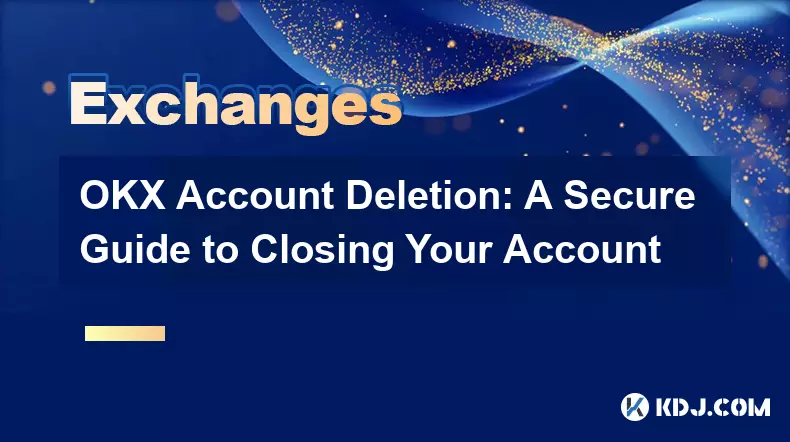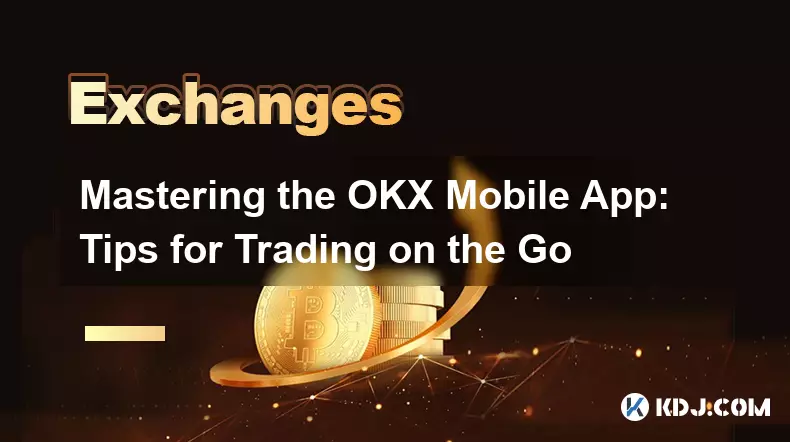-
 bitcoin
bitcoin $100977.009184 USD
-2.05% -
 ethereum
ethereum $3282.009150 USD
-3.23% -
 tether
tether $0.999813 USD
-0.02% -
 xrp
xrp $2.208254 USD
-4.89% -
 bnb
bnb $951.411089 USD
0.55% -
 solana
solana $155.761205 USD
-2.84% -
 usd-coin
usd-coin $1.000217 USD
0.02% -
 tron
tron $0.284475 USD
-1.28% -
 dogecoin
dogecoin $0.162363 USD
-1.53% -
 cardano
cardano $0.533988 USD
-0.47% -
 hyperliquid
hyperliquid $39.174339 USD
-3.22% -
 chainlink
chainlink $14.724828 USD
-1.16% -
 bitcoin-cash
bitcoin-cash $477.297986 USD
-1.28% -
 zcash
zcash $554.227426 USD
17.30% -
 ethena-usde
ethena-usde $0.998995 USD
-0.03%
Understanding Liquidation on OKX: A Guide for Margin Traders
Liquidation in margin trading occurs when a trader's balance drops below maintenance requirements, triggering an automatic position close to limit risk.
Nov 05, 2025 at 07:10 am

What Is Liquidation in Margin Trading?
1. Liquidation occurs when a trader’s margin balance falls below the maintenance margin requirement, forcing the exchange to close their position automatically. This mechanism protects both the platform and other users from excessive risk exposure.
2. On OKX, every margin position has a liquidation price, which is determined by the borrowed amount, collateral value, and current market conditions. When the market moves against the trader and reaches this threshold, the system triggers liquidation.
3. The process is fully automated and executed within seconds, minimizing delays. Once initiated, the position is closed at the prevailing market rate, often resulting in partial or total loss of the initial margin.
4. Traders are not notified individually during liquidation; instead, they rely on real-time alerts and dashboard indicators to monitor their risk levels before reaching critical thresholds.
5. Liquidation does not imply a manual intervention by OKX staff but rather follows predefined algorithmic rules embedded in the trading engine.
How OKX Calculates Liquidation Price
1. The liquidation price depends on several variables: leverage level, entry price, loan size, interest accruals, and the value of collateral posted. Higher leverage reduces the buffer between entry and liquidation prices.
2. For cross-margin accounts, all assets serve as collective collateral, meaning fluctuations in any held asset can influence the overall health of the margin position.
3. In isolated margin mode, each trade operates independently with its own dedicated collateral. A drop in that specific pair's value directly impacts the liquidation point without affecting other positions.
4. OKX continuously recalculates the estimated liquidation price based on live funding rates, mark prices, and accrued interest. These updates appear in the trading interface for transparency.
5. Traders using high leverage must understand that even minor price swings can trigger liquidation due to compressed safety margins.
Risk Management Tools Available on OKX
1. Users can set stop-loss and take-profit orders alongside margin trades to limit downside exposure. While these don’t prevent liquidation directly, they help manage open positions proactively.
2. The platform provides a risk indicator showing the current tier of the account—ranging from healthy to high risk—based on the distance from the liquidation price.
3. Margin ratio monitoring allows traders to view how close they are to the maintenance threshold. A ratio below 100% typically indicates imminent liquidation.
p>4. OKX offers a demo trading environment where users can simulate margin strategies without risking real funds, helping them understand liquidation mechanics under different scenarios.
5. Depositing additional collateral or reducing position size manually can shift the liquidation price further away from the current market value.
Common Misconceptions About Liquidation
1. Some traders believe that OKX manipulates prices to trigger liquidations, but liquidation logic is transparent and based on global market data and internal risk models accessible via API.
2. Others assume that once liquidated, they lose everything instantly. In reality, OKX employs an insurance fund that covers most negative balances, returning residual equity in certain cases.
3. There is a myth that increasing leverage always leads to higher profits. However, it equally amplifies the likelihood of early liquidation during volatility spikes.
4. Many overlook the impact of funding fees in perpetual margin products, which accumulate over time and subtly erode equity, bringing positions closer to liquidation.
5. Understanding the difference between mark price and last traded price is crucial, as OKX uses mark price to determine liquidation, preventing manipulation through rogue trades.
Frequently Asked Questions
What happens to my remaining balance after liquidation?After liquidation, if your position is partially covered by collateral, any leftover equity may be returned to your account. If the insurance fund absorbs a shortfall, you are not liable for further losses.
Can I cancel a liquidation once it starts?No. Once the system detects that the margin ratio has breached the minimum threshold, the liquidation sequence begins immediately and cannot be canceled or reversed.
Does OKX notify me before liquidating my position?Yes. OKX sends real-time warnings through in-app alerts and email notifications when your margin level approaches the danger zone, giving you time to act before liquidation.
How does the insurance fund work during liquidation?The insurance fund collects surplus from profitable liquidations and uses it to cover deficits when a user's collateral is insufficient. This ensures smooth settlement without burdening other traders.
Disclaimer:info@kdj.com
The information provided is not trading advice. kdj.com does not assume any responsibility for any investments made based on the information provided in this article. Cryptocurrencies are highly volatile and it is highly recommended that you invest with caution after thorough research!
If you believe that the content used on this website infringes your copyright, please contact us immediately (info@kdj.com) and we will delete it promptly.
- BlockDAG, Avalanche, Dogecoin: Crypto's Leading Trio in 2025
- 2025-11-07 22:05:01
- Layer 2 Coins: Will There Be a Potential Explosion by 2026?
- 2025-11-07 16:50:02
- Filecoin, ICP, and the AI Infrastructure Renaissance: Is History Repeating?
- 2025-11-07 16:50:02
- Bitcoin's Wild Ride: Surges, Zeros, and the Search for Stability
- 2025-11-07 17:05:01
- XRP, Bitcoin, and the Rally: What's the Deal, New York?
- 2025-11-07 17:25:01
- Filecoin, DePIN, and a Technical Breakout: What's the Buzz?
- 2025-11-07 17:05:01
Related knowledge

Common Mistakes to Avoid on OKX: A Guide for New Traders
Nov 04,2025 at 03:37pm
Understanding the Interface Before Trading1. New traders often jump into placing orders without fully exploring the OKX platform layout. Taking time t...

OKX TradingView Integration: A Guide to Advanced Chart Analysis
Nov 02,2025 at 03:37am
OKX and TradingView: Bridging the Gap for Professional Traders1. OKX, one of the leading cryptocurrency exchanges, has integrated with TradingView to ...

Finding Your OKX Deposit Address: A Quick and Safe Guide
Nov 05,2025 at 01:15pm
Finding Your OKX Deposit Address: A Step-by-Step Process1. Log into your OKX account using your registered credentials. Ensure you are accessing the o...

OKX Savings Guide: A Low-Risk Strategy for Earning Crypto
Nov 05,2025 at 06:55am
Understanding OKX Savings and Its Role in Crypto Earnings1. OKX Savings offers users a straightforward method to earn passive income by leveraging idl...

OKX Account Deletion: A Secure Guide to Closing Your Account
Nov 05,2025 at 08:44am
Understanding the Implications of Account Closure1. Closing your OKX account permanently removes access to all associated trading features, including ...

Mastering the OKX Mobile App: Tips for Trading on the Go
Nov 05,2025 at 01:19am
Streamlined Navigation for Efficient Trading1. The OKX mobile app features a clean and intuitive interface that allows traders to access key functions...

Common Mistakes to Avoid on OKX: A Guide for New Traders
Nov 04,2025 at 03:37pm
Understanding the Interface Before Trading1. New traders often jump into placing orders without fully exploring the OKX platform layout. Taking time t...

OKX TradingView Integration: A Guide to Advanced Chart Analysis
Nov 02,2025 at 03:37am
OKX and TradingView: Bridging the Gap for Professional Traders1. OKX, one of the leading cryptocurrency exchanges, has integrated with TradingView to ...

Finding Your OKX Deposit Address: A Quick and Safe Guide
Nov 05,2025 at 01:15pm
Finding Your OKX Deposit Address: A Step-by-Step Process1. Log into your OKX account using your registered credentials. Ensure you are accessing the o...

OKX Savings Guide: A Low-Risk Strategy for Earning Crypto
Nov 05,2025 at 06:55am
Understanding OKX Savings and Its Role in Crypto Earnings1. OKX Savings offers users a straightforward method to earn passive income by leveraging idl...

OKX Account Deletion: A Secure Guide to Closing Your Account
Nov 05,2025 at 08:44am
Understanding the Implications of Account Closure1. Closing your OKX account permanently removes access to all associated trading features, including ...

Mastering the OKX Mobile App: Tips for Trading on the Go
Nov 05,2025 at 01:19am
Streamlined Navigation for Efficient Trading1. The OKX mobile app features a clean and intuitive interface that allows traders to access key functions...
See all articles





















![The Graph Price Prediction [GRT Crypto Price News Today] The Graph Price Prediction [GRT Crypto Price News Today]](/uploads/2025/11/07/cryptocurrencies-news/videos/690d4df44fe69_image_500_375.webp)



















































